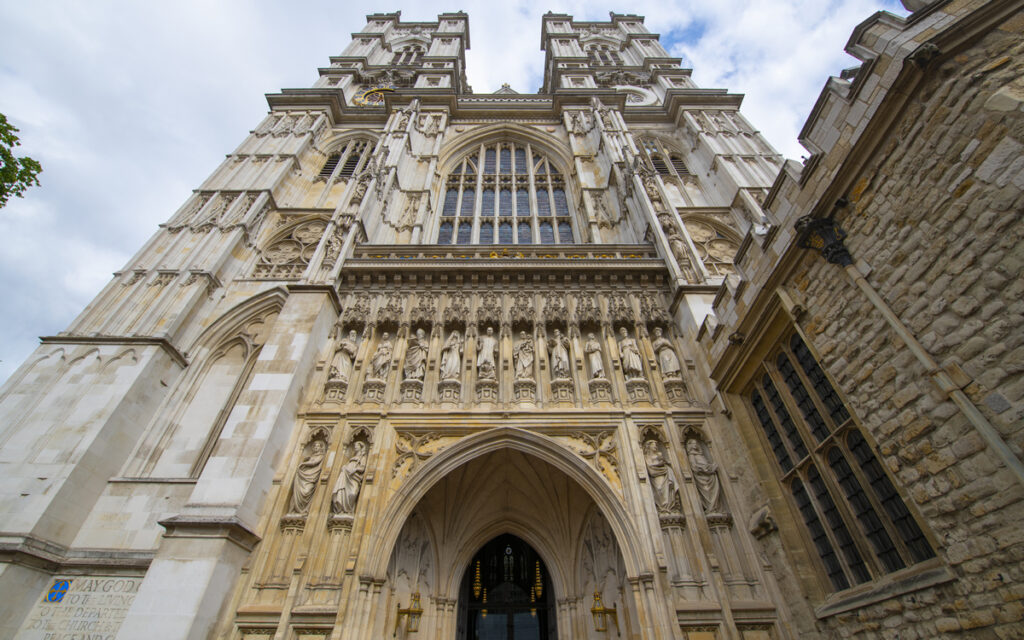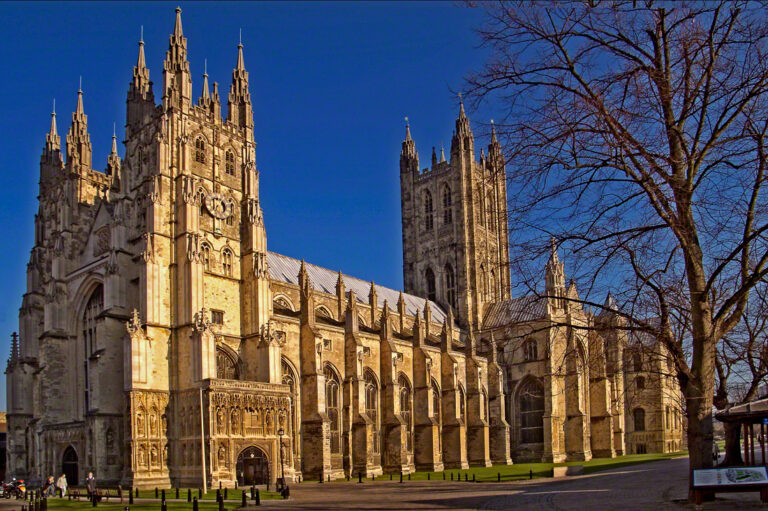Yes, in this context, the terms “Anglican Church” and “Church of England” are used interchangeably. The Church of England is indeed a part of the broader Anglican Communion, and the mention of sects like the Protestant Episcopal Church highlights the connection between various Anglican churches worldwide.
Therefore, in this specific context, “Anglican Church” refers to the Church of England, making them essentially the same.
The Story of Anglicanism: From Henry VIII to a Global Family of Churches
The Anglican Communion and the Church of England have a shared history that began during the English Reformation in the 16th century. King Henry VIII wanted to end his marriage, so he broke away from the Roman Catholic Church in the 1520s. In 1534, the Church of England was established, with Henry VIII as its head.
At first, the Church of England was kind of like the Catholic Church, but over time, especially during the reigns of Edward VI and Elizabeth I, it became more Protestant. The word “Anglicanism” started being used in the 17th century to describe the special way of doing things in the Church of England. Anglicanism tries to balance both Catholic and Protestant ideas, focusing on the Bible, tradition, and the role of bishops.
Moreover, the Anglican Communion is a group of churches worldwide that are connected to the Church of England through the Archbishop of Canterbury. It officially started in 1867. Today, it has over 41 million members in 160 countries, showing the different ways people follow Anglicanism around the world.
Also, Some important events in history include the Act of Supremacy in 1534, making Henry VIII the boss of the Church of England. There was a short time of going back to Catholic ways in 1553 when Queen Mary I was in charge, but then it switched back to Protestant ways when Queen Elizabeth I took over in 1558.
Then, the Book of Common Prayer was published in 1662, becoming a standard way of doing church services. In 1867, the first Lambeth Conference organized the Anglican Communion.
Other conferences in later years talked about important things like letting women become priests (1968) and dealing with questions about human relationships (1998). All these events shaped how the Church of England and the Anglican Communion do things today.
Beliefs and Practices of Anglicans

Anglicans, both in the Anglican Communion and the Church of England, share common beliefs and practices based on the Christian faith. They follow the teachings of the Bible, the Apostles’ Creed, and the Nicene Creed, and they value the sacraments of baptism and holy communion.
Core Beliefs:
- Trinity: Anglicans believe in one God existing as Father, Son (Jesus Christ), and Holy Spirit.
- Jesus Christ: They believe Jesus is God’s Son, sent to save humanity. They accept his virgin birth, sacrificial death, resurrection, and ascension.
- Bible: Also, see the Bible as God’s inspired word and the ultimate guide for Christian faith.
Sacraments:
- Baptism: A symbol of entering the Christian faith.
- Holy Communion: A remembrance of Jesus’ sacrifice.
Practices:
- Worship: Anglican worship combines tradition with flexibility. Services usually follow a set order but allow for local adaptations.
- Book of Common Prayer: A standard liturgical text containing prayers, hymns, and readings used in worship.
- The Eucharist (Holy Communion): Central to Anglican worship, reenacting Jesus’ Last Supper.
Similarities and Differences:
Similarities:
- Both follow core Christian tenets like the Trinity, the divinity of Jesus, and Bible authority.
- Both use the same baptismal rite.
- Both emphasize the importance of the Eucharist.
Differences:
- The Anglican Communion is a loose group of churches, while the Church of England is a national church with a more centralized structure.
- The Archbishop of Canterbury leads the Anglican Communion, while the monarch of England is the Supreme Governor of the Church of England.
- Differences exist within the Anglican Communion on issues like homosexuality and same-sex marriage.
- The Church of England has a formal relationship with the state, affecting areas like education and social welfare.
Structure and Organization of Anglicans
Anglicans, both in the Anglican Communion and the Church of England, have specific ways they organize themselves.
Anglican Communion:
The Anglican Communion is a group of independent churches, each with its own way of doing things. The Archbishop of Canterbury is like a leader, but he doesn’t tell other provinces what to do. There are four main parts that help the Communion work together:
Lambeth Conference: Every 10 years, archbishops (called primates) meet to talk about important things and find common ground.
Primates’ Meeting: Every two years, primates gather in a smaller, more casual meeting to discuss current issues.
Anglican Consultative Council (ACC): This is a big gathering with representatives from all provinces. They talk about things that affect everyone in the Communion.
Archbishop of Canterbury: This person is like a spiritual leader, bringing unity and guidance to the Anglican Communion.
Church of England:
The Church of England is a church just for England, and it has a more organized structure:
General Synod: This is like the rule-making group. It has three parts: bishops, clergy, and regular church members.
Crown Nominations Commission: This group suggests names for bishops to the monarch, who then appoints them.
Dioceses: England is split into areas called dioceses, each with its own bishop to oversee things.
Parishes: Dioceses are divided into parishes, which are like local church groups. Each parish has a leader who takes care of the people there.
Comparison of Organizational Structures: Anglican Communion vs. Church of England
| Feature | Anglican Communion | Church of England |
| Type of structure | A loose association of autonomous churches | National church with a centralized structure |
| Head of the Communion | Archbishop of Canterbury | Monarch of England |
| Legislative bodies | Lambeth Conference, Primates’ Meeting, Anglican Consultative Council | General Synod |
| Executive bodies | Archbishop of Canterbury, Crown Nominations Commission | Dioceses, parishes |
Relationship between Anglican Communion and Church of England
The Church of England is part of the Anglican Communion but has a special role as the national church of England. The monarch is the top leader, following a law from 1534. This relationship has both good and tricky parts.
Also, Some provinces in the Communion, like the Episcopal Church in the United States, don’t like that the Church of England is connected to the government. They say it makes it hard for the Communion to agree on things, especially about topics like homosexuality and same-sex marriage.
Furthermore, even with challenges, the Anglican Communion is a diverse and lively family of churches. They share a strong history and beliefs, helping them work together and support each other. The Communion’s future will depend on how well it faces 21st-century challenges while sticking to its important values.
The Anglican Communion and the State: A Simple Overview

The way the Anglican Communion and the State connect is a bit tricky but interesting. The Anglican Communion is like a big family of churches worldwide that share similar beliefs. Then there’s the Church of England, which is like a family member from England.
Church of England’s Special Role:
- The Church of England is like a family member who gets special treatment because it’s the official church of England.
- The monarch of England is like the boss of it. They even pick the Archbishop of Canterbury, who is like the church’s leader.
- It also has some seats in the House of Lords, which is part of the British government.
Pros and Cons of the Church of England’s Connection with the State:
- Sometimes it’s good for the Church of England because the government helps and protects it.
- Other times, people say it’s not so good because the church might get too involved with the government and not be independent enough.
Anglican Communion’s Worldwide Relationships:
- The Anglican Communion is like the big family, and its connection with the state is not as official as the Church of England’s.
- The Archbishop of Canterbury, who is a big deal in the Communion, visits places like the United Nations and works with governments and groups on things like helping the poor, education, and healthcare.
Future Changes:
- As the Anglican Communion becomes more global, it might have to figure out how to stick to its important beliefs while working with different governments.
Key Points:
- The way the Anglican Communion and the state connect is tricky.
- The Church of England is like a special family member from England.
- Sometimes the Church of England’s connection with the state is good, and sometimes it’s not so good.
- The Anglican Communion is like a big family that works with different governments.
- Things might change in the future as the Anglican Communion becomes even more global.
FAQ’s
Is Anglican closer to Catholic or Protestant?
Yes, Anglicanism, in its structures, theology, and forms of worship, represents a middle ground between 16th-century Roman Catholicism and Protestantism, aiming to find a balanced position.
When did the Anglican Church become the Church of England?
In November 1534, the Act of Supremacy formally established the Church of England by abolishing papal authority in England and declaring Henry VIII as the Supreme Head.
Can Church of England be Catholic?
Yes, The Church of England sought to be a middle way, embracing both Protestant and Catholic elements, maintaining the threefold order of Bishop, Priest, and Deacon.
What church do Anglicans belong to?
Anglicans belong to the Anglican Communion, an international association of churches, including the Church of England and other national and regional Anglican churches.
Do Anglicans pray to Mary?
No, Anglicans tend to pray ‘with’ Mary, not ‘to’ her, aligning more with ‘comprecation’ rather than ‘invocation’ as observed in Roman Catholic and Orthodox traditions.
Is Anglican different to Catholic?
Yes, the main difference lies in the recognition of the pope. Unlike Catholics, Anglicans do not acknowledge the pope as the head of the Christian faith; instead, the head of the Church of England is the British monarch.
What kind of religion is Anglican?
Anglicanism is a Christian tradition born out of the Protestant Reformation in England during the 16th century. It values its place in a global communion of churches, emphasizing a rich history, commitment to Scripture, and the gospel of Jesus Christ.
Final Words
In conclusion, while the terms “Anglican” and “Church of England” are closely related and often used interchangeably, they carry nuanced distinctions. “Anglican” is the overarching term for a family of Christian churches worldwide that share a common heritage rooted in the Church of England.
On the other hand, the “Church of England” specifically refers to the Anglican church situated in England. The interchangeable use of these terms depends on the context, as they describe different aspects of the same religious tradition.
So, Understanding these subtleties is crucial for appreciating the global diversity within the Anglican Communion while recognizing the unique position of the Church of England as the established church in England.

